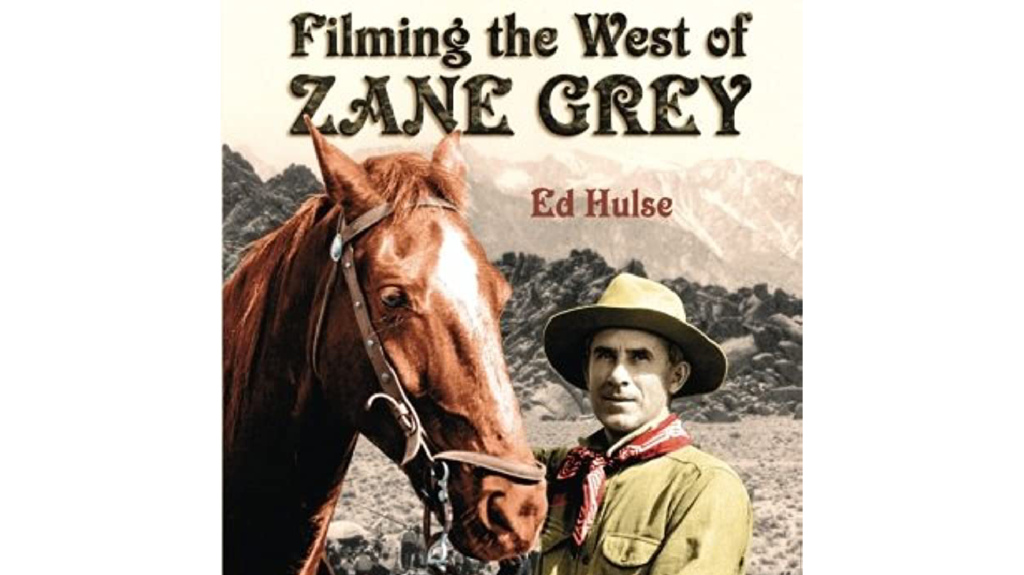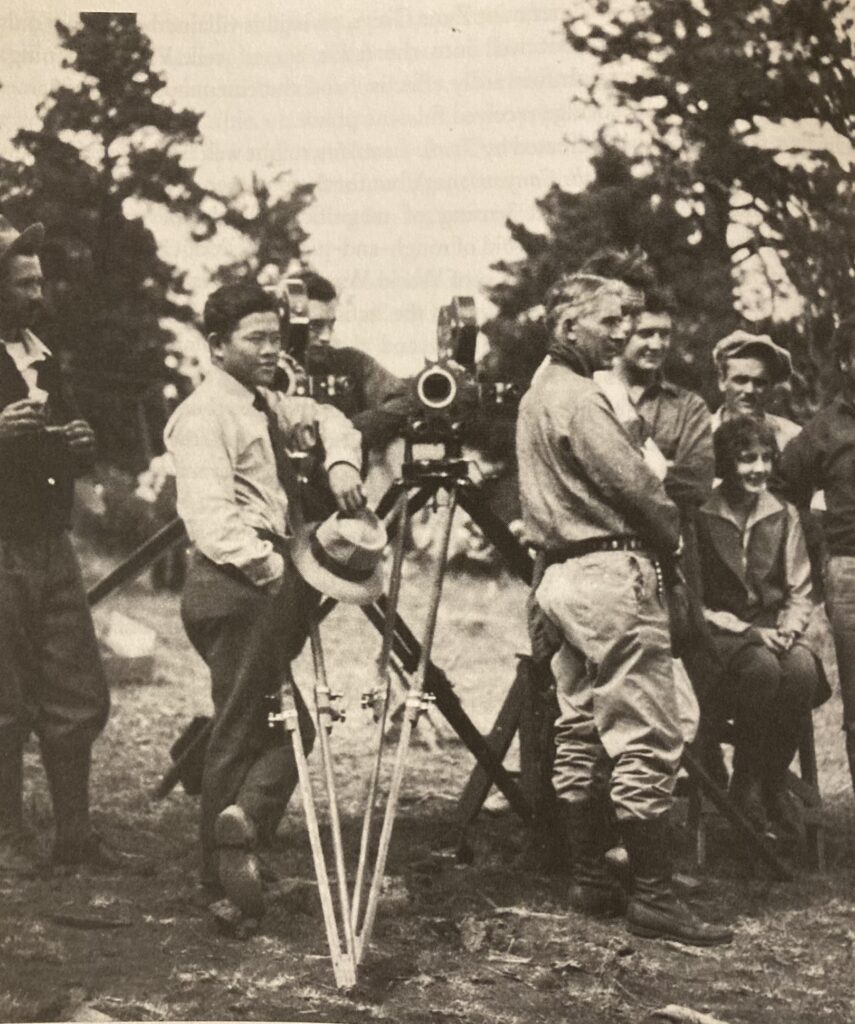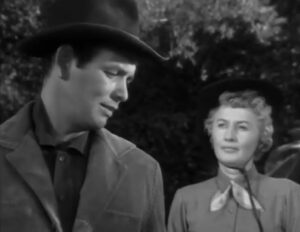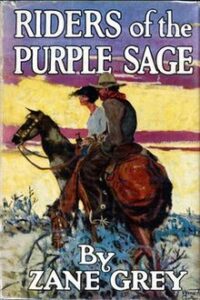
For each of the past two classic film reading challenges, I read a Zane Grey Western that had been adapted into multiple classic Hollywood films: Riders of the Purple Sage and Heritage of the Desert. Earlier this year when I saw a book covering the numerous film adaptations of Grey’s work, I couldn’t help myself but buy it to get a birdseye view of Zane Grey’s impact on Hollywood history and the Western genre.
Author Ed Hulse starts with a brief life sketch of Zane Grey’s life and his impact on the Western novel. With this helpful background, we’re ready to dive into Grey’s relationship with the Hollywood studios that would adapt his novels and stories to screens. (For those curious, using the book I’ve made a Letterboxd list of all 112 feature film adaptations attributed to one of Grey’s stories.)
Gaining his first success as an author in the early 1910s, Grey couldn’t have planned for a better time to make it big. Several studios were eager to gain rights to Grey’s works for solid box-office material in the early years of feature films.
Rights didn’t stop everyone though. In fact, the first Grey adaptation to reach the screen was a Selig production that had lost a bidding war for the rights with another studio. Adapted from Grey’s The Light of Western Stars, Selig changed the film’s name to The Heart of Texas Ryan and slightly edited minor plot elements to avoid any legal repercussions when releasing the completed film.
Originally a dentist from Ohio, Grey fell in love with the West at an early age.
In leasing screen adaptations rights to four of his novels to William Fox in the late 1910s, Grey became one of the first authors to loan out his screen rights, in this case for seven years, instead of merely selling them outright. Fox’s string of Grey adaptations starring William Farnum proved popular and brought both Fox Film Corporation and Grey a healthy sum of money.
Grey struck an even more favorable deal with Famous Players-Lasky, later Paramount, in 1923. Hoping to compete with Fox’s popular Tom Mix westerns and replace their own fading Western star William S. Hart, Famous Players-Lasky got rights to adapt any Zane Grey novel or short story except for the five properties then licensed to the Fox studios. Grey, in return, received $25,000 for each story licensed and a large share of each film’s net profits. The contract also included a unique stipulation that each of Grey’s adaptations would be shot at the real-life locations mentioned in his stories.
Grey’s deal with Paramount would be the peak of Grey’s powers in Hollywood and churn out some of the best-regarded adaptations of his work. The 1920s saw critics and audiences turn sour on Grey’s increasingly formulaic plots and themes that were ridden off as uninspired reiterations of his earliest successes. By the coming of sound, adaptations of Grey’s stories increasingly became the fodder of B-Westerns as studios became increasingly hesitant to bankroll A-level Western pictures.
Zane Grey on the location of 1923’s To The Last Man standing next to James Wong Howe and a young John Huston.
Even after Grey’s death in 1939, studios kept producing adaptations of his work focusing more on his earlier novels than his later stories. (Grey’s novels were posthumously released up until the 1960s.) Paramount and Fox frequently returned to Grey’s works up until the early 1940s with some success before Republic and RKO released the bulk of Grey adaptations in the 1940s and 1950s. Outside of a TV series in the early 60s and a 1996 adaptation of Riders of the Purple Sage, no Zane Grey properties have been made since 1956’s The Maverick Queen.
Hulse remains honest on the limitations of many of the later adaptations whether low budgets, wooden acting, stale dialogue, or just less-than-stellar source material were to blame for a lower-quality film. Hulse also takes time to praise his favorite adaptations and points out to the best of his ability how the lost films were received and what they might have been like.
After laying out Grey’s dealings with studios and how his works were adapted after his death, the rest of the book goes through each Grey film adaptation listing out the cast and crew with short plot synopses and a quote or two from contemporary reviews. This section boasts tons of pictures from fan magazine advertisements, production stills, and behind-the-scenes location shooting. With a decent amount of the films especially from the silent era lost to time, these pictures provide our only glimpse into these early Westerns.
A sample of the book’s wonderful photographs.
My biggest knock on the book is the lack of further analysis in the small blurbs about each individual film. While he does share some opinions on the films in the book’s introductory section, Hulse leaves a lot to be desired when thumbing through the rest of the book. Luckily the pictures are good enough to make up for the book’s shortcomings.
Reading Hulse’s history of Grey and pursuing the exhaustive list of adaptations definitely gave me a better appreciation for Grey’s influence on the Western genre. Because many of the films using Grey’s stories are lost or B-Westerns, Grey remains more a footnote than a staple in the annals of Hollywood history. Filming the West of Zane Grey accomplishes its objective to bring to light Zane Grey’s impact on the Western genre although it is not an exhaustive account but merely the start to more rigorous analysis and discussion on the topic.
There is definitely a lot of valuable history that Western and non-Western fans alike will joy. Stars like William Farnum, Tom Mix, George O’Brien, Richard Dix, Gary Cooper, George Montgomery, Tim Holt, and Barbara Stanwyck litter the book’s pages. I’d highly recommend Filimng the West of Zane Grey, especially the introductory chapters, to anyone looking to learn about and gain a better appreciation of Westerns from the prestigious Westerns of the silent era to the B-Westerns of the 1950s.
This is my fourth of six reviews for the 2023 Classic Film Reading Challenge sponsored by Raquel Stecher of Out of the Past. Make sure to subscribe to my email list to get my next summer reading challenge review straight to your inbox:







I learned so much from your review, Shawn — I never knew anything about Zane Grey, but I was especially interested because I sold a couple of his books through my Etsy shop last year that I found in my grandmother’s attic! Really fascinating stuff.
– Karen